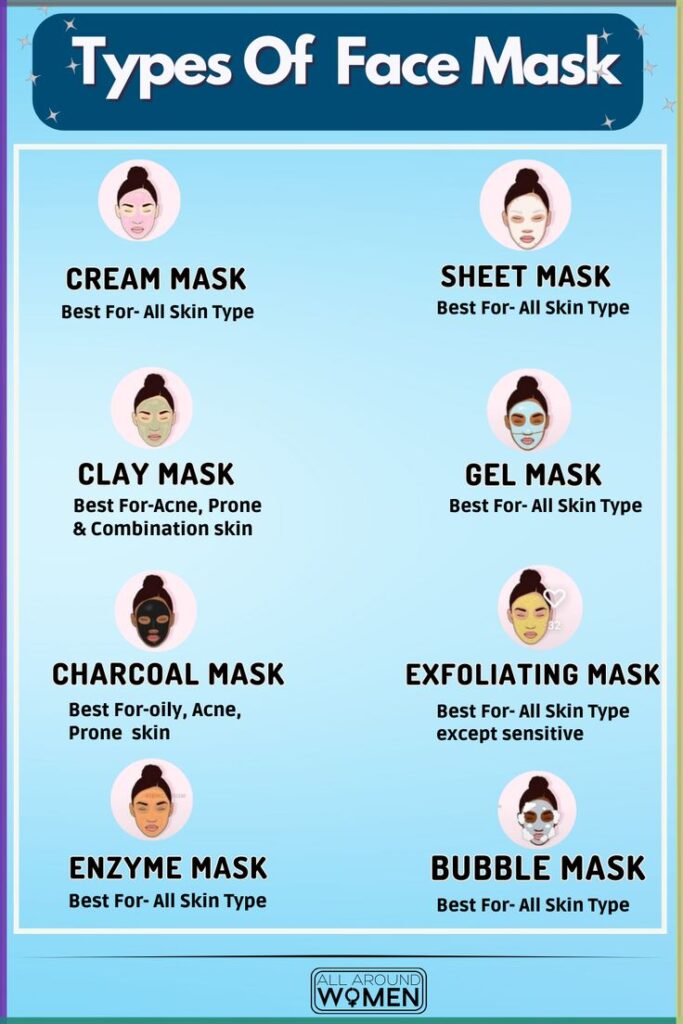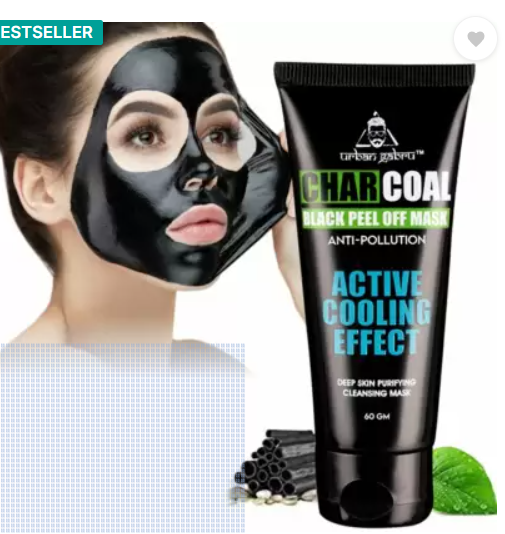
Face masks have become an essential part of many skincare routines, offering a quick and convenient way to target specific skin concerns. Whether you’re looking to hydrate, detoxify, or brighten your complexion, face masks provide numerous benefits. Here are the top 5 benefits of face masks and tips on how to use them effectively for the best results.
1. Deep Hydration and Nourishment
- Benefit: Many face masks, especially those formulated with hydrating ingredients like hyaluronic acid, glycerin, aloe vera, and natural oils, provide intense moisture to the skin. These masks help replenish the skin’s moisture barrier and prevent dehydration, which is especially important in climates with extreme weather conditions (dry winters or hot summers).
- How to Use: Apply a hydrating mask to freshly cleansed skin and leave it on for the recommended time, usually 10-20 minutes. For extra hydration, you can follow up with a moisturizer to lock in the moisture.
- Effective Tip: Use hydrating masks 1-2 times a week to keep your skin soft, plump, and nourished.
2. Cleansing and Detoxifying
- Benefit: Clay, charcoal, and mud masks are particularly known for their ability to detoxify the skin by drawing out impurities, excess oil, and toxins. These masks work by penetrating deep into the pores, absorbing dirt and oil, and leaving the skin looking cleaner and more refined.
- How to Use: After cleansing your skin, apply a thin layer of the detoxifying mask to your face, avoiding the sensitive eye area. Leave it on for the recommended time (usually 10-15 minutes) and rinse off with lukewarm water. These masks may cause some tightening as they dry, but that’s a sign that they’re working.
- Effective Tip: Clay masks can be drying, so use them sparingly—once a week is sufficient for oily or acne-prone skin. Be sure to follow up with a good moisturizer to prevent dryness.
3. Brightening and Even Skin Tone
- Benefit: Many face masks contain ingredients such as vitamin C, turmeric, licorice extract, and other antioxidants that help brighten the skin and even out skin tone. These ingredients can reduce the appearance of dark spots, hyperpigmentation, and dullness, resulting in a glowing, more radiant complexion.
- How to Use: For brightening masks, apply a thin layer to your face and allow it to sit for about 10-15 minutes. Rinse off with lukewarm water, and you’ll notice a subtle radiance in your skin.
- Effective Tip: For optimal brightening results, use masks with vitamin C or niacinamide regularly—about once or twice a week. Be consistent to see long-term improvements in skin tone.
4. Anti-Aging and Firming
- Benefit: Face masks containing ingredients like peptides, retinol, collagen, or antioxidants help promote skin elasticity and reduce the appearance of fine lines and wrinkles. These masks stimulate collagen production, leaving the skin looking firmer, smoother, and more youthful.
- How to Use: Apply an anti-aging mask to clean skin, and leave it on for the recommended duration. Be sure to follow up with a serum or moisturizer to maximize the anti-aging benefits and maintain hydration.
- Effective Tip: Use anti-aging masks 1-2 times a week, especially as part of your nighttime routine, to allow your skin to repair and regenerate while you sleep.
5. Targeted Treatment for Specific Concerns
- Benefit: Face masks can be formulated to address specific skin concerns such as acne, inflammation, redness, or sensitivity. For example, masks with tea tree oil or salicylic acid help treat acne, while those with chamomile or aloe vera soothe irritated skin. By using masks tailored to your needs, you can see more visible results in a shorter period.
- How to Use: Apply a mask targeted for your specific skin concern (e.g., acne or redness) to the affected areas, and leave it on for the recommended time. If you have combination skin, you can even target different areas with different masks (e.g., a clay mask on your T-zone and a hydrating mask on your cheeks).
- Effective Tip: Spot treatments are perfect for acne-prone or inflamed skin. Use a targeted mask once a week to calm your skin and reduce breakouts or redness.
How to Use Face Masks Effectively
To get the most out of your face mask routine, follow these simple steps:
- Cleanse Your Skin First: Always start with a clean face to ensure that the mask can penetrate your skin effectively. Use a gentle cleanser suited for your skin type to remove dirt, oil, and makeup.
- Exfoliate (Optional): For deeper mask penetration, exfoliate your skin before applying a mask. Exfoliation removes dead skin cells, allowing the mask to work more effectively.
- Apply Evenly: Use clean hands or a mask brush to apply an even layer of the mask to your face, avoiding the sensitive eye and lip areas. Be sure to follow the instructions for the recommended amount.
- Set a Timer: Follow the recommended time for the mask to stay on (usually between 10-20 minutes). Leaving a mask on for too long can irritate or dry out the skin, while taking it off too soon may reduce its effectiveness.
- Rinse Off with Lukewarm Water: Once the mask has set, rinse it off with lukewarm water to avoid further irritation from hot water. Pat your face dry with a clean towel.
- Moisturize: After removing the mask, always apply a moisturizer to seal in the benefits and keep your skin hydrated. If using a brightening or anti-aging mask, consider following up with a serum to boost the treatment.

Conclusion
Face masks are an excellent addition to your skincare routine, offering deep hydration, detoxification, brightening, anti-aging, and targeted treatments for specific concerns. By using masks effectively and consistently, you can achieve smoother, clearer, and more radiant skin. Whether you need a quick skin boost or a solution for long-term concerns, there’s a mask for every skin type and need. Just remember to choose the right mask for your skin and follow the instructions for maximum results.